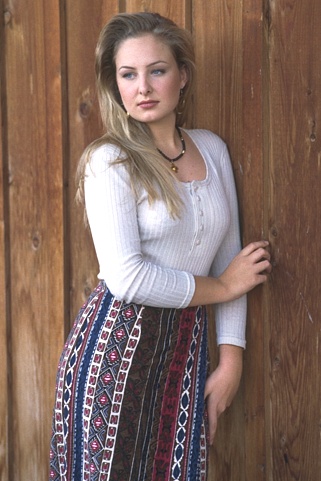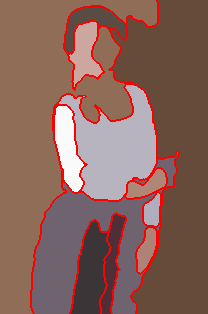 |
Unsupervised Segmentation of Natural Images
|
 |
| Allen
Y. Yang, John Wright, Yi Ma, and Shankar Sastry |
 |
Unsupervised Segmentation of Natural Images
|
 |
| Allen
Y. Yang, John Wright, Yi Ma, and Shankar Sastry |
© Copyright Notice: It is important that you read and understand the copyright of the following software packages as specified in the individual items. The copyright varies with each package due to its contributor(s). The packages should NOT be used for any commercial purposes without direct consent of their author(s).
ABSTRACT:We cast natural-image segmentation as a problem of clustering texure features as multivariate mixed data. We model the distribution of the texture features using a mixture of Gaussian distributions. Unlike most existing clustering methods, we allow the mixture components to be degenerate or nearly-degenerate. We contend that this assumption is particularly important for mid-level image segmentation, where degeneracy is typically introduced by using a common feature representation for different textures in an image. We show that such a mixture distribution can be effectively segmented by a simple agglomerative clustering algorithm derived from a lossy data compression approach. Using either 2D texture filter banks or simple fixed-size windows as texture features, the algorithm effectively segments an image by minimizing the overall coding length of the feature vectors. We conduct comprehensive experiments to measure the performance of the algorithm in terms of visual evaluation and a variety of quantitative indices for image segmentation. The algorithm compares favorably against other well-known image segmentation methods on the Berkeley image database. |
|
 |
Publications: |
| Allen Y. Yang, John Wright, Yi Ma, and Shankar Sastry. Unsupervised segmentation of
natural images via lossy data compression.
To appear in CVIU 2007. [PDF] |
|
 |
References: |
| Yi Ma, Harm Derksen, Wei Hong,
and John Wright. Segmentation of
multivariate mixed data via lossy coding and compression.
(Preprint) PAMI. 2007. [PDF] |
|
 |
MATLAB Toolboxes: |
|
Segmentation
of Mixtures of
Gaussians via Pairwise Steepest Descent
This package implements Algorithm 1 in the paper. Source code: http://www.eecs.berkeley.edu/~yang/software/lossy_segmentation/MDL_segmenter.zip (c) Copyright. University of California, Berkeley. 2007. Authors: Wei Hong, John Wright, and Allen Y. Yang. Contact: Allen Y. Yang <yang@eecs.berkeley.edu> Last update: 3-6-2007. |
|
|
Natural-Image
Segmentation via Lossy Compression
This package implements the CTM algorithm. Source code: http://www.eecs.berkeley.edu/~yang/software/lossy_segmentation/CTM_image_segmentor.zip (c) Copyright. University of California, Berkeley. 2007. Authors: John Wright and Allen Y. Yang. Contact: Allen Y. Yang <yang@eecs.berkeley.edu> Last update: 7-30-2007. |
|
|
Image
Segmentation Benchmark Indices Package
We provide the source codes that implement four standard image segmentation indices that compare the difference between two segmentation results of the same set of images. Particularly, we are interested in comparing segmentation results between an algorithm and human subjects.
Soource code: http://www.eecs.berkeley.edu/~yang/software/lossy_segmentation/SegmentationBenchmark.zip (c) Copyright. University of California, Berkeley. 2007. Authors: John Wright and Allen Y. Yang. Contact: Allen Y. Yang <yang@eecs.berkeley.edu> Last update: 3-6-2007. Note: The Berkeley image segmentation benchmark set is available at: http://www.eecs.berkeley.edu/Research/Projects/CS/vision/grouping/segbench/ |
|
 |
Representative
Segmentation Results from the Berkeley Segmentation Benchmark Database |
| We provide here
segmentation
results on the Berkeley segmentation benchmark obtained by CTM. There are two ways to download the results.
|
|
[Return to Home]